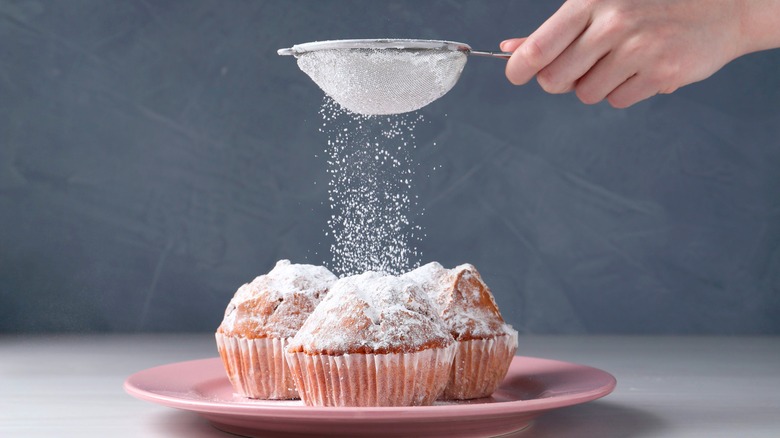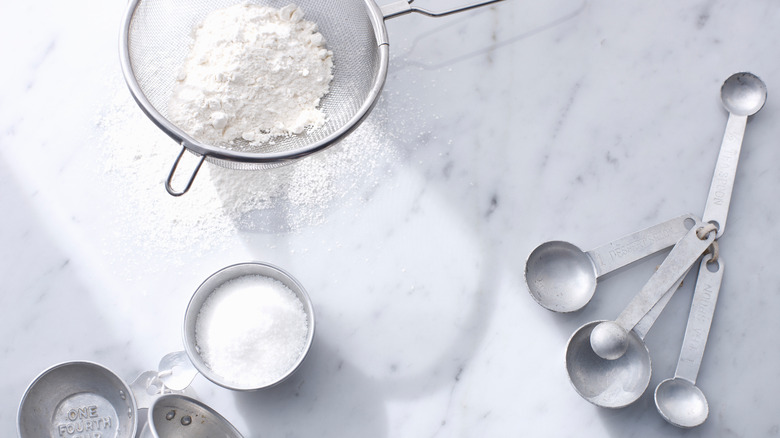How To Easily Make Powdered Sugar At Home
No pancake breakfast or elegantly decorated sweet treat would be complete without powdered sugar. Whether you gently sift it over a dessert for a sweet special touch or a wintery appearance akin to fresh snow, a little confectioners' sugar goes a long way when making and decorating baked goods. But the powdery sweetener's advantages aren't only related to its appearance. Unlike granulated sugar, which doesn't dissolve well in cold liquids like milk or heavy cream, powdered sugar is fine enough to prevent noticeable graininess. Even superfine caster sugar, which has smaller granules than standard table sugar and is often used by bartenders, isn't the best sweetener in all cases. Instead, the flour-like texture of powdered sugar is the secret to perfectly fluffy whipped cream, smooth buttercream frosting, silky royal icing, and even creamy cannoli filling.
However, since powdered sugar is a baker's best friend for making many desserts, you might find yourself running out often. Fortunately, though, when a recipe calls for confectioner's sugar and you don't have a bag left in the pantry, you probably don't need to grab your keys and swing by the grocery store after all. As it turns out, it's remarkably easy to make powdered sugar at home. All you need is a couple of ingredients that you likely do still have: granulated white sugar and cornstarch. With the help of a blender or food processor, you'll be able to make mountains of powder sugar for all your baking needs — space permitting, of course.
Blend granulated sugar into fine powdered sugar
It might seem too good to be true that powdered sugar is made by grinding regular table sugar into dust. However, this little secret can be a saving grace in the kitchen when you're short on this ultra-fine sweetener. After all, who doesn't love a hack that's simple in terms of both its steps and ingredients?
When making powdered sugar at home, combine 1 cup of granulated white sugar and 1 tablespoon of cornstarch in a blender or food processor. (You can also prepare a smaller amount in a coffee grinder with only ⅓ cup of sugar and 1 teaspoon of cornstarch.) Using the pulverizing tool of your preference, pulse the mixture until it becomes a soft, fluffy powder. The resulting sugar should be doubled in volume and ready to use for icing or decorating a cake — even more beautifully done with a lace stencil.
Thankfully, homemade powdered sugar is as effortless to store, too. Whatever doesn't end up in a mixing bowl or dusted atop sweet treats should be put into an airtight container and kept in a cool, dry place free of strong odors. It's best used within a year or two, but can be left at room temperature indefinitely. The cornstarch, which is commonly added to store-bought confectioners' sugar, helps stop the powder from clumping. However, if you do eventually notice hard clumps forming, you're best off blending up a new fresh batch of powdered sugar, easily said and done.

